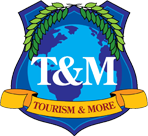Tourism, Threats, Terror, and War
April 2003
As much as the travel industry dislikes discussing the issue of threats, threat assessments, the terror attacks and war, the current climate forces travel professionals to take the time to look at threats to its component industries and be prepared to deal with such threats such they happen. Threat assessments in tourism often involve three basic areas. First the travel professional ought to think about where the local industry is vulnerable to security issues. For example, the recent sniper shootings in Washington, DC showed just how vulnerable the public is to random violence and the ensuing negative publicity generated by that violence. Secondly, travel professionals need to ask where they are vulnerable to issues of safety. The recent health scares on cruise ships is an example of how easily a random health risk can infect the industry and cause major economic problems. The third area of susceptibility may be a spin-off of the latter two areas. These are the economic hardships caused by acts of violence or problems of safety. The airline industry’s many cutbacks is partially due to security issues that turned into economic issues, generating a whole new set of customer relation problems, such as curtailment of service, long lines, and passenger anger. These three areas together are classically called “tourism surety” and represent the point where security, safety and economics intersect.
To help you deal with some of these issues, Tourism Tidbits’ offers the following suggestions and ideas for your consideration.
- Conduct a susceptibility study. Every tourism office, CVB, attraction, restaurant and place of lodging should have some idea where it is most vulnerable to attack. An attack can be anything from an act of violence to a crime of distraction (pickpocket), from planned food poisoning to inadvertent spreading of an illness. Professionals should rank these risks and ask themselves what methodologies were used to determine the ranking. Never forget that an answer is only as good as the assumptions behind it and the methodology used to obtain the ranking.
- Develop risk teams. No one person can determine where your susceptibilities lie. A risk team should consist of a wide range of people, from a marketer to an architect, from a security professional to medical specialist. When developing susceptibility teams do not shy away from people with strong opinions, it is better to argue things before the event than after the problem occurs.
- Look at threats to your business from multiple perspectives. For example, do not see the threat as only occurring on your property, but think instead about your surroundings. Ask yourself how a threat that may materialize into an attack within your city, county, province, state or nation will impact your business. For example, if your location is close to a fire zone, what special protections are you taking? September 11, 2001 should have been a wake-up call to the travel and tourism industry that an event that occurs in one place can negatively impact millions of other people who live and work at great distances from the attack.
- Analyze the types of threats that an adversary might use against your attraction, museum, or locale. In the modern world there is no such thing as 100% security. The best we can do is to pick our battles and try to outguess what an adversary might do to harm us. As all institutions have limited resources, we need to practice a form of security triage. That is to say, we accept a greater risk at point “A” because we cannot afford to accept the risk that something may occur at point “B”. What are your acceptable risks?
- Develop a simple probability chart. To develop a probability chart, develop a simple chart with four headings. Label these: (1) high chance of occurrence with high negative consequences, (2) low change of occurrence with high chance of negative consequences, (3) high chance of occurrence with low negative consequences and (4) low chance of occurrence with low negative consequences. Then list your threats and place them into the proper category. Once you have determined which are your threats have high probabilities of occurrence with high negative consequences; make those your number 1 priority.
- Categorize your threats by groupings. Think through such categories as the location of your attraction, who might be a potential adversary, and what would be the benefit of damaging you institution. Then ask yourself if you expect impairment to come from a natural cause such as an earthquake or fire or are you must fearful of a man-made cause such as crime for profit or an act of terrorism. Take the time to ask who and what is a risk? In tourism there are traditionally seven categories of people/things at risk. These are (1) visitors, (2) the local population, (3) staff, (4) the institution/building, (5) the ecology of the area, (6) the industry’s (locale’s) reputation, and (7) its economic viability.
- Think through if all of your visitors pose the same risk or need the same amount of protection. For example, school children pose a different type of risk and need different protection methods than the lone foreign leisure visitor. You cannot then determine the risk until you determine who poses a risk, what is a risk and what type of possession to buildings, works of art, and different types of people need.
- Develop suitable threat guidelines. Ask yourself questions such as can visitors enter your premises or not with handbags? Do you need to collect license numbers or photocopy identity cards? Do you need to conduct a background check on your employees?
These are very dangerous times for the travel and tourism industries. Many people in tourism would prefer not to think about security, safety and economics. Indeed they prefer to fix a problem through marketing. Marketing, however, cannot bring back a life nor can it repair a priceless piece of art. Instead the best marketing is facing a problem and working to solve it. If not the greatest threat to the travel and tourism industry might just be itself.



